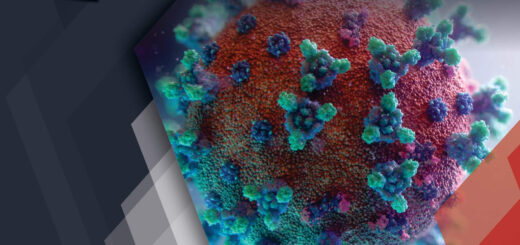Navigating Patent Drawing Requirements Across Various Patent Applications
Patent applications often require patent drawings to help the examiner understand an invention clearly and meet patent drawing requirements. This is because patent drawings make a patent application more detailed and illustrative. However, the requirement of drawings may differ as per the type of patent application being filed with the respective patent office. So, one needs to follow the patent drawing guidelines to avoid rejections.
The following article talks about the types of patent applications, their drawing requirements, and office actions received while filing them.
Table of Contents
What is a Patent Application?
A patent application is drafted for a specific invention. It includes a description of the invention with added official documents that are relevant to it. The invention described and claimed by the applicant virtually always includes illustrations of the invention and describes the best manner known to the inventor for practicing the invention. There are different types of patent applications with different drawing requirements. To understand that, the applicant must comprehend the different levels of protection granted to inventors based on what they want to patent. The two levels of protection are:
- Process Patent: A form of utility patent that covers methods of changing the functionality or characteristics of a material during a particular use.
- Product Patent: It is an exclusive ‘right to manufacture’ given to the original inventor of the product.
Types of Patent Applications and Drawing Requirements
There are various types of patent applications, each tailored to fulfill specific purposes. When filing, it’s crucial to align with patent requirements and objectives.

Here we will explore the patent drawing requirements for provisional, PCT national phase, and PCT international phase applications. Below, you’ll find a breakdown of these applications.
Provisional Application
It is a type of temporary/non-final application that can be filed if the invention is still under the experimentation stage. An applicant may choose to file this type of patent application if he/she requires time to complete the invention. However, there are certain points one needs to keep in mind while filing a provisional application.
- It can only be filed for utility and plant inventions.
- After filing, applicant has to file the complete specification within 12 months from the date of provisional specification.
- Applicant cannot claim his priority on the application.
- It is necessary to provide detailed information to identify the invention and its core.
- Foreign filing details of the said invention – statement of undertaking and Form 3 which an applicant has to file.
Patent Drawing Requirements in Provisional Application
Usually, at this point, patent offices do not require drawings as part of provisional application. But it would be almost irresponsible to not do so. The drawings should be included if the invention can be described through it. It helps in demonstrating the invention in a better way.
For example, a mechanical invention would definitely need an illustration. Furthermore, if not included, the patent controller can ask for the submission of at least one drawing during the prosecution process.
Also, the drawings for provisional application can be drafted using any vector-related tools, as long as they are legible and understandable. The views that can be used to illustrate the invention are basic standard views like perspective, front, rear, left, right, top and bottom views.
Patent Cooperation Treaty (PCT) International Application
The PCT application is a method to file a patent application in more than 150 countries at once using a single application. PCT offers a unified and streamlined procedure to file the application to protect inventions in the countries that are signatory to it. The requirements for PCT international applications are:
- Inventor(s) name and address
- Applicant details and nationality
- Description, claims and drawings
- Required corresponding foreign applications, such as, date of filing, application number and current status
Patent Drawing Requirements and Office Action (OA)
In terms of patent drawing requirements, grayscale photographs can be used in the PCT international application based on complexity. After filing, the patent office can issue rejections based on drawings. In such a scenario, the response to the office action must be filed within two months from the date of mailing according to OA requirement.
Except where the defect is in the request, any correction must be submitted by filing a replacement sheet embodying the correction and a letter accompanying the replacement sheet, which shall draw attention to the difference between the replaced sheet and the replacement sheet. The figures below demonstrate the filed application and the replacement drawing.


Similarly, when replacement drawings are being submitted to the USPTO, they must say “replacement sheet” in the top margins. However, if the drawings are being submitted only to the PCT, the “replacement sheet” header must be omitted. (The requirement is based on the examiner’s mention to add a “replacement sheet”).
PCT National Phase Application
When an international application is made according to PCT designating India, an applicant can file the national phase application in India within 31 months from the priority date or the international filing date, whichever is earlier. The time limit can be increased through national laws by each member country. This type of patent application requires:
- Applicant’s complete details and nationality
- Inventor’s name and address
- Complete specification including description, claims, and drawings
- PCT application details such as number and date
- Certified copy of priority details and documents
- Particulars of amendments made to specification and the changes made during the international phase.
Patent Drawing Requirements and Office Action
A response to a patent application from the patent office is received usually between 12 to 13 months. If the applicant receives notice of an office within 13 months, it’s accompanied by a list of points described regarding rejections, such as unclear and patent-ineligible claims, obviousness, and issues with patent drawings.
Some of the common grounds for patent drawing rejections are lack of novelty and faulty drawing. Sometimes, the rejection is based on hatch patterns used in the drawings; when they violate USPTO requirements. For instance, incorrect or lack of hatching in sectional view can lead to rejection. So, while using hatch patterns, the patent illustrator must ensure certain factors. For example, hatching shouldn’t obstruct lead lines and reference characters.
Best Practices for Patent Drawing Requirements
Navigating patent drawing requirements can present various challenges, ranging from ensuring compliance with technical specifications to addressing office actions related to drawings. Common grounds for drawing rejections include lack of clarity, inconsistent labeling, and non-compliance with formatting guidelines. To mitigate these challenges, inventors and patent professionals should adhere to best practices such as:
- Engaging experienced patent illustrators or drawing services.
- Conducting thorough reviews of drawing specifications and guidelines.
- Seeking clarification from patent examiners or professional advisors when faced with uncertainties.
Conclusion
Patent drawings in a patent application require multiple techniques to demonstrate the invention clearly. These techniques must fall in line with the requirements of the patent office concerned. On the other hand, regardless of the type of patent application being filed, an effective application is usually a team effort between the inventor, patent attorney, and patent drawings team that drafts the illustration.
At Sagacious IP, we are dedicated to offering extensive support to businesses for their patent drawing needs. Our adept Patent Drawings/Illustrations service excels in creating clear and precise visual representations, aiding the examiner’s understanding of the invention.
– Mitthatmeer Kaur and Rahul Raj (Editorial Team)
Having Queries? Contact Us Now!
"*" indicates required fields




